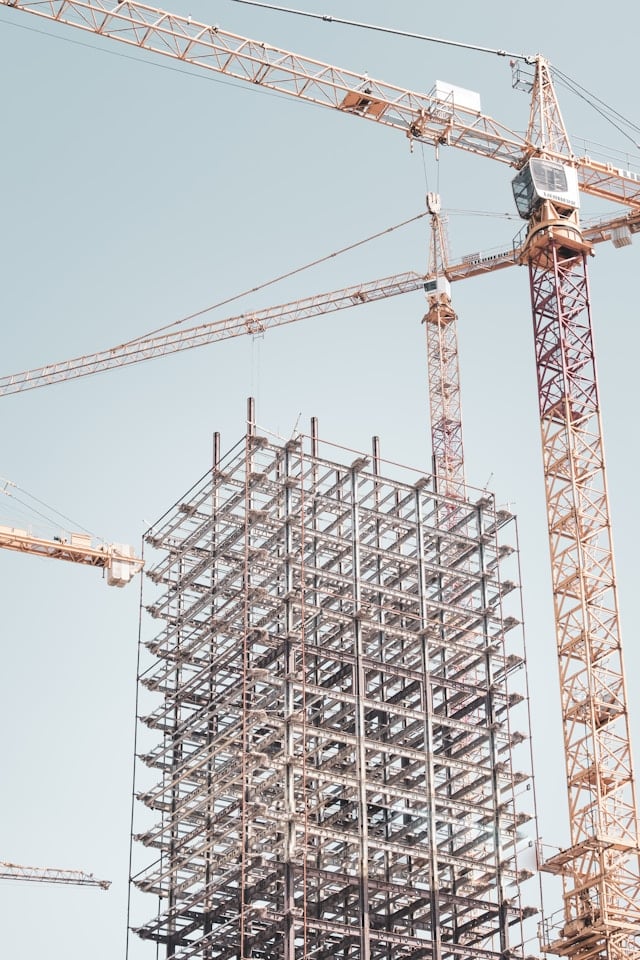What Are the Strategies for Rehabilitating Deteriorating Infrastructure into Real Estate Assets?

The rehabilitation of deteriorating infrastructure into real estate assets is an intricate process that requires a blend of financial acumen, project management expertise, and a comprehensive understanding of local city and housing regulations. Here, the key is to transform an ageing asset, which could be a bridge, a building or any other type of property, into a valuable investment. This comprehensive guide will delve into some of the best strategies to facilitate this process. You will discover how these strategies are crucial to ensuring the safety of the end-users, managing the risk involved, and ensuring the viability of these projects.
Identifying the Potential of a Deteriorating Infrastructure
Before embarking on any rehabilitation project, it is paramount to first evaluate the potential of the deteriorating infrastructure. This step involves assessing the location, existing condition, and potential use of the property post-rehabilitation.
En parallèle : How to Develop Age-Inclusive Residential Real Estate Suitable for All Life Stages?
Local city regulations and plans also play a significant role in this evaluation. Perhaps the city has plans for a new transport hub or commercial district, which could significantly increase the appeal and value of the property.
Consider the cost involved in bringing the structure up to standard, factoring in every aspect of the project from demolition, if necessary, to construction and final touches. The financial aspect of a project of this magnitude cannot be underestimated. Proper budgeting and financial management are absolute necessities to prevent the project from turning into a financial sinkhole.
A voir aussi : What Legal Protections Are Essential for Real Estate Crowdfunding Investors?
Implementing Safety Measures
Safety is a paramount concern in any infrastructure rehabilitation project. This concern is two-fold: ensuring the safety of the workers involved in the rehabilitation and guaranteeing the safety of the end-users upon completion of the project.
Risk management strategies must be put in place to prevent, mitigate and manage any potential hazards during the rehabilitation process. This could involve anything from implementing rigorous safety protocols on-site to insuring the project against potential losses.
Post-rehabilitation, safety inspections must be performed to ensure the structure is safe for use. This could involve the local building inspector, fire marshal, and other relevant authorities. A safe property will attract more potential owners or tenants and will likely command a higher price or rent.
Utilising Existing Infrastructure
In some cases, the existing infrastructure can be utilised in the rehabilitation of the property. This could potentially reduce the cost of the project and contribute to its uniqueness. The current aesthetic or historic value of the property could be maintained while upgrading the functionality and safety of the infrastructure.
This strategy involves working closely with architects, engineers, and other professionals to evaluate the feasibility of retaining existing components while ensuring all local building codes and safety regulations are adhered to.
Engaging Stakeholders and Local Communities
Successful rehabilitation of a deteriorating infrastructure requires the engagement and support of various stakeholders. These include local city officials, potential owners or tenants, and the wider community.
Engaging these stakeholders early in the project will help to preempt and address any potential issues or objections. It will also make it easier to secure necessary permits and other regulatory approvals.
Community engagement can also contribute to the success of the project. By involving the local community in the project, you can foster a sense of ownership and connection, which can help to attract potential owners or tenants.
Adopting Sustainable Practices
Adopting sustainable practices in the rehabilitation of deteriorating infrastructure can serve a dual purpose: reducing the environmental impact of the project and enhancing its appeal to potential owners or tenants.
Sustainable practices could involve the use of environmentally friendly materials, recycling or repurposing existing materials, and incorporating energy-efficient features such as solar panels or green roofs.
To ensure the long-term sustainability of the property, consider implementing a maintenance plan. This plan should outline the regular upkeep required to maintain the property’s value and appeal.
The rehabilitation of deteriorating infrastructure into real estate assets is no easy feat. It requires a comprehensive understanding of the property, financial management skills, and the ability to navigate the local city and housing regulations. By implementing these strategies, you can transform ageing infrastructure into a valuable and appealing real estate asset.
Incorporating Advanced Management Systems in Rehabilitation Projects
The deployment of advanced management systems in rehabilitation projects can optimize decision-making, streamline operations, and increase the overall project execution effectiveness. Advanced asset management systems can aid in tracking the progress, controlling the budget, identifying risks, and implementing mitigation strategies. Asset management software can automate many processes, thus reducing human error and increasing efficiency.
In the context of rehabilitating deteriorating infrastructure, these systems can help in identifying vacant lots and abandoned buildings, assessing their potential value, tracking the progress of the rehabilitation project, and ensuring that the project stays on budget.
Local governments can use such systems to create a comprehensive database of all the city’s assets, including ageing infrastructure. This database can serve as a valuable tool in urban planning, helping to identify areas of the city that would benefit most from rehabilitation projects, and in determining property values post-rehabilitation.
Furthermore, these management systems can assist in liaising with local governments for obtaining necessary permits and approvals, as well as ensuring compliance with local city and housing regulations. Insurance is another important aspect of infrastructure rehabilitation projects that can be effectively managed with these systems. From comparing liability insurance options to managing claims, the software can simplify and streamline the process.
Implementing Green Infrastructure in Rehabilitation Projects
The implementation of green infrastructure, both during and after the rehabilitation of deteriorating infrastructure, can contribute to improved health safety, increased property values, and enhanced appeal to property owners and potential tenants. Green infrastructure refers to the incorporation of natural systems into built environments to manage stormwater, reduce heat effects, and create healthier environments.
For instance, in the rehabilitation of an old building, a green roof can be installed. This not only improves the property’s aesthetic appeal but also contributes to reducing storm water runoff, improving air quality, and providing insulation. Similarly, pavement management can involve the use of permeable pavements, which help in managing stormwater, reducing urban heat island effects, and improving groundwater recharge.
Another aspect of green infrastructure is the creation of green spaces or parks in the neighborhood. This not only enhances the appeal of the property but also promotes community health by providing spaces for recreation.
The implementation of green infrastructure requires a collaborative approach, involving urban planners, architects, engineers, and local communities. This approach can transform not just a single building or property but an entire neighborhood, increasing property values and enhancing the quality of life for all residents.
Conclusion: Transforming Aging Infrastructure into Valuable Real Estate Assets
Transforming ageing infrastructure into valuable real estate assets is a multifaceted process. It requires careful planning, effective decision-making, efficient management, appropriate safety measures, and diligent community engagement. The rehabilitation process does not only involve the structure itself, but it also involves the surrounding environment and the people who live in it.
Adopting advanced management systems can significantly enhance the efficiency and effectiveness of rehabilitation projects. It allows for better tracking of progress, budget control, risk identification, and mitigation. Green infrastructure, on the other hand, serves to improve the health safety of the community, increase property values, and appeal to potential property owners.
Local governments can play a significant role in facilitating the rehabilitation of aging infrastructure. By maintaining a comprehensive land bank, they can identify potential properties for rehabilitation and also monitor the progress of ongoing projects.
The potential benefits of rehabilitating aging infrastructure are immense. From improving the aesthetic appeal of a neighborhood to enhancing the safety and health of its residents, and from boosting property values to creating lucrative investment opportunities, the process holds promise on multiple fronts.
The road to rehabilitation, however, is not without its challenges. Therefore, continuous learning, through the exploration and analysis of case studies and best practices, is necessary to navigate this complex process successfully. Through diligent planning and execution, it is possible to transform these dilapidated structures into desirable real estate assets, paving the way for a brighter and more sustainable future.
